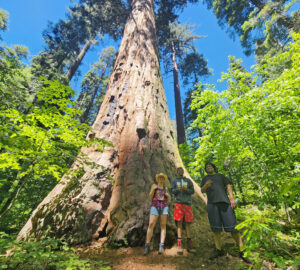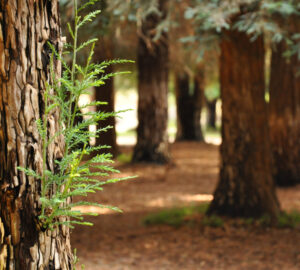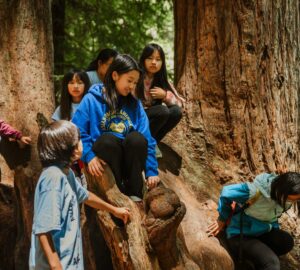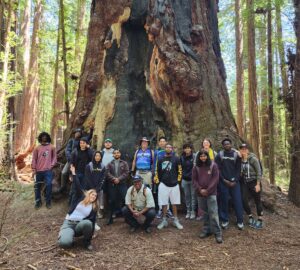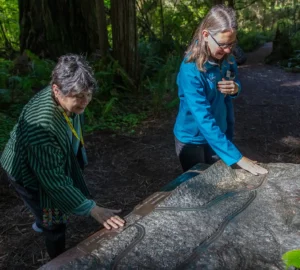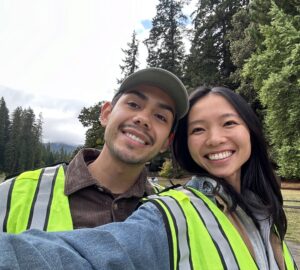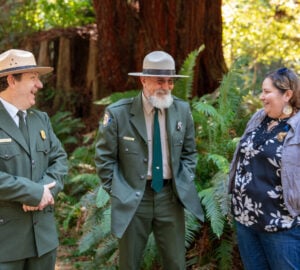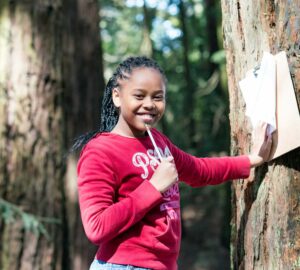Asian and Pacific Islander community members and allies enjoy a redwood grove in Carbon Canyon Regional Park
For 13 years I lived in Los Angeles, never knowing that less than 50 miles southeast, a coast redwood grove had been quietly growing since 1975. Recently, a League partnership with Outdoor Asian beckoned me back to Southern California to visit these redwoods.
On a balmy Saturday morning in May, members from the Los Angeles chapter of Outdoor Asian, along with allies from Latino Outdoors and other communities, met up to experience the redwoods of Carbon Canyon Regional Park in Brea, California. In the shadow of growing anti-Asian violence and in the wake of the pandemic, Asian/Pacific American Heritage Month was a restorative time for Outdoor Asian to host this (still socially distanced) community outing. The event was sponsored through the League’s Redwood Connect Grants.
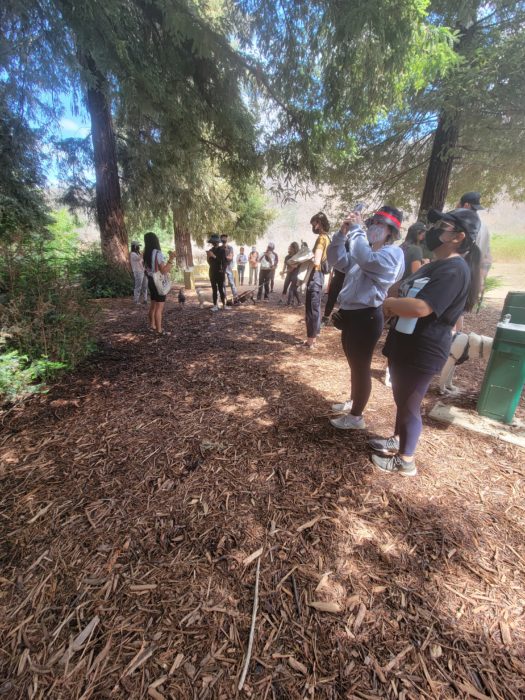
Here on the ancestral lands of the Tongva, Acjachemen, and Kizh peoples, we walk a little over a mile on the sun-drenched Carbon Canyon Nature Trail lined with California walnut trees, chaparral, and other SoCal native plants that I’ve missed. Upon entering the 3-acre redwood grove, the coolness beneath the canopy is a literal breath of fresh air. It’s a miracle the trees are here. Rangers planted donated coast redwood seeds for the park’s opening in 1975, and the trees have managed to grow—some up to 100 feet tall—in the region’s arid climate.
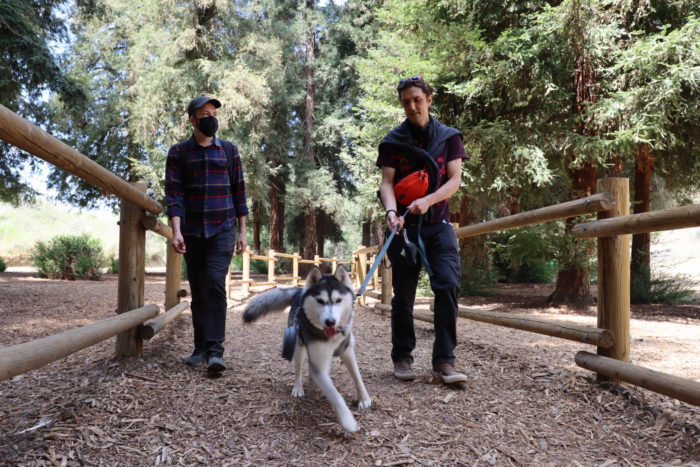
I’ve heard many people say coast redwoods don’t belong here in Southern California, for lots of reasons. But the fact is they’re here, and they serve a wonderful purpose. On this day, there are hikers who, like me, had never known this grove existed, and some had never seen a redwood in real life. There are more than 21 million people in the surrounding counties of Orange, Los Angeles, San Bernardino, Riverside, and San Diego. A large majority of those people do not have easy access to see the redwoods. And for many of them, all it takes is this one gateway experience to inspire a love for these iconic trees. If we are to protect one of California’s most critical climate- and fire-resilient forests for future generations, it will take the support of all Californians.
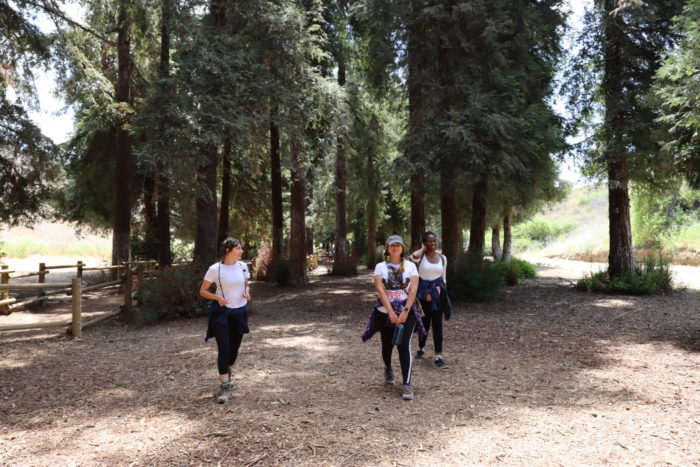
The beginner-friendly out-and-back trail is just 2.5 miles round trip. At the hike’s end, we gather around on a grassy picnic area as members of Outdoor Asian walk us through an impromptu bystander intervention training based on a program developed by Hollaback. As many of us are returning to the outdoors during a precarious time on so many levels, it’s important for everyone to learn how to proactively keep our community members safe from harassment.
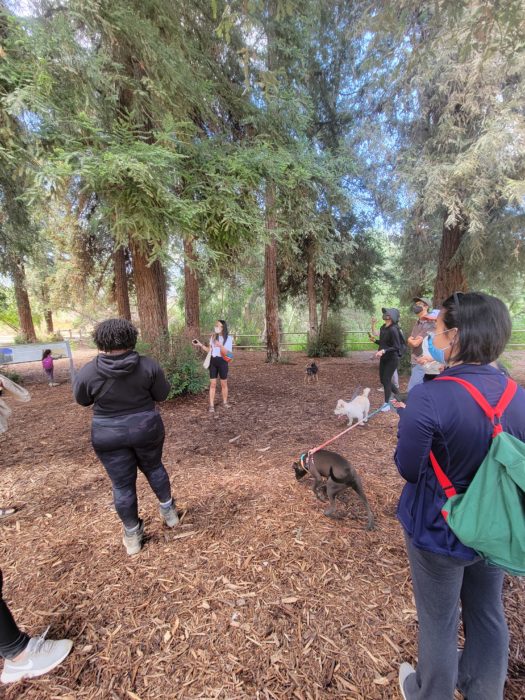
Harassment isn’t always blatant; sometimes it takes the form of a microaggression. When people call redwoods in SoCal unnatural and invasive, many don’t realize how insidious that narrative can be. Asian and Pacific Islander folks and other immigrant communities have historically endured sentiments that communicate to us that we don’t belong—in the outdoors, in this country. But we are here, and we are thriving. Organizations like Outdoor Asian hold space for us to support one another in fostering our own sense of belonging. Seeing a community of redwoods standing tall against all odds—in hindsight, I can say that is as inspiring as a walk through an ancient forest.

